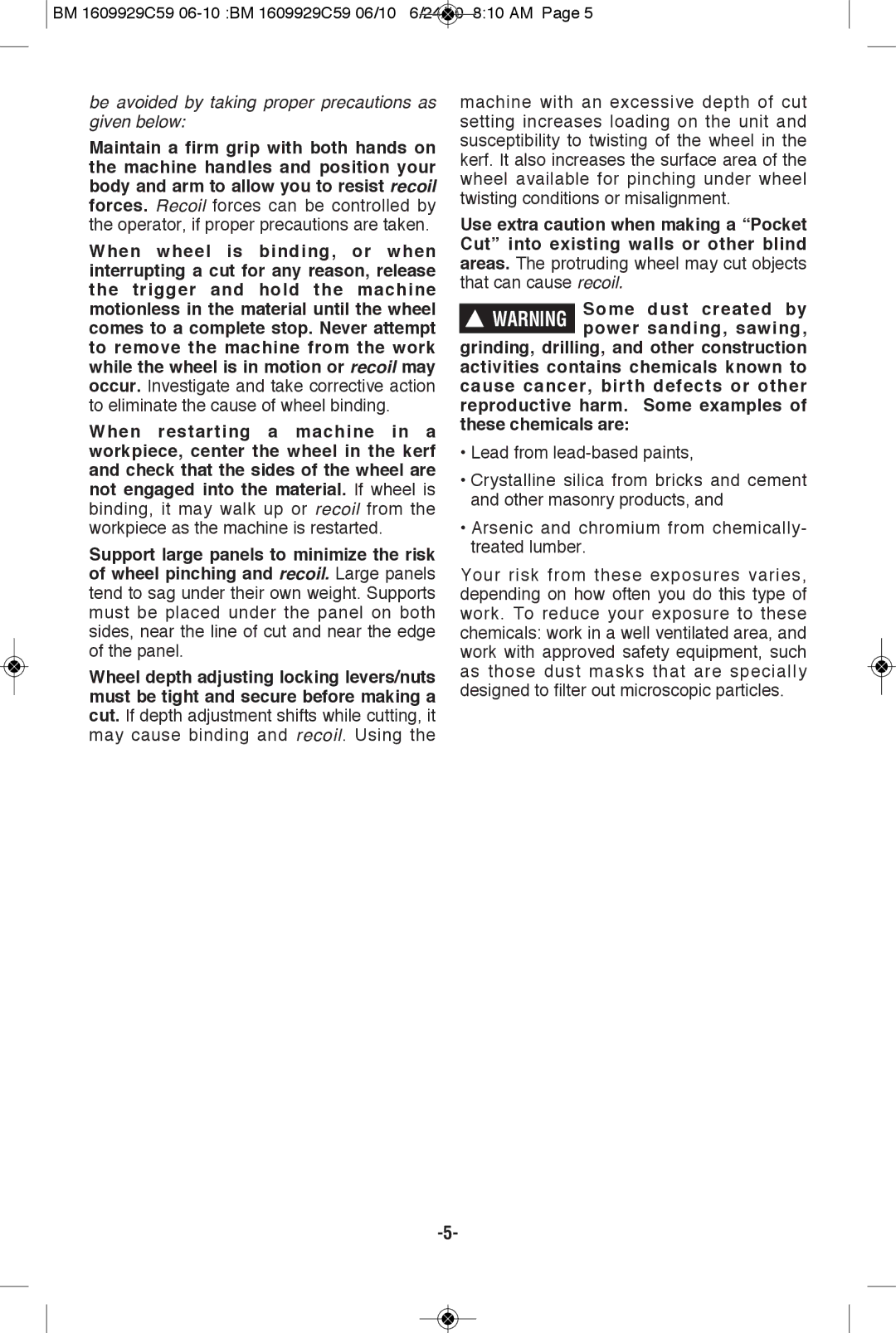
 BM 1609929C59
BM 1609929C59 06-10 :BM 1609929C59 06/10 6/24/10 8:10 AM Page 5
be avoided by taking proper precautions as given below:
Maintain a firm grip with both hands on the machine handles and position your body and arm to allow you to resist recoil forces. Recoil forces can be controlled by the operator, if proper precautions are taken.
When wheel is binding, or when interrupting a cut for any reason, release the trigger and hold the machine motionless in the material until the wheel comes to a complete stop. Never attempt to remove the machine from the work while the wheel is in motion or recoil may occur. Investigate and take corrective action to eliminate the cause of wheel binding.
When restarting a machine in a workpiece, center the wheel in the kerf and check that the sides of the wheel are not engaged into the material. If wheel is binding, it may walk up or recoil from the workpiece as the machine is restarted.
Support large panels to minimize the risk of wheel pinching and recoil. Large panels tend to sag under their own weight. Supports must be placed under the panel on both sides, near the line of cut and near the edge of the panel.
Wheel depth adjusting locking levers/nuts must be tight and secure before making a cut. If depth adjustment shifts while cutting, it may cause binding and recoil. Using the
machine with an excessive depth of cut setting increases loading on the unit and susceptibility to twisting of the wheel in the kerf. It also increases the surface area of the wheel available for pinching under wheel twisting conditions or misalignment.
Use extra caution when making a “Pocket Cut” into existing walls or other blind areas. The protruding wheel may cut objects that can cause recoil.
Some dust created by power sanding, sawing, grinding, drilling, and other construction
activities contains chemicals known to cause cancer, birth defects or other reproductive harm. Some examples of these chemicals are:
• Lead from
• Crystalline silica from bricks and cement and other masonry products, and
• Arsenic and chromium from chemically- treated lumber.
Your risk from these exposures varies, depending on how often you do this type of work. To reduce your exposure to these chemicals: work in a well ventilated area, and work with approved safety equipment, such as those dust masks that are specially designed to filter out microscopic particles.
